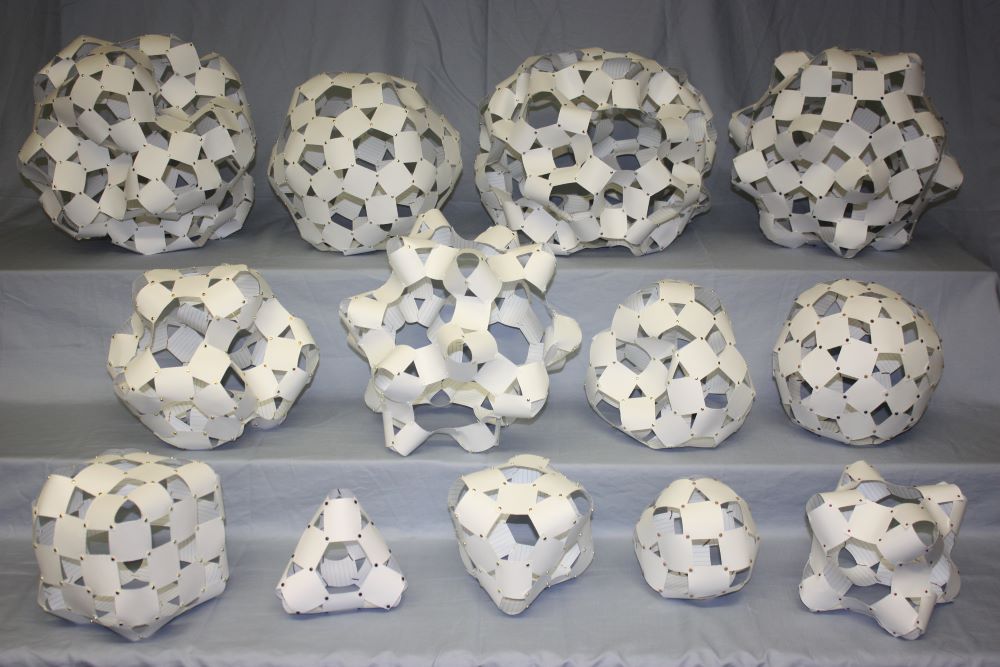Expanded Polyhedral Forms
One active area for my research and art is creating forms by expanding polyhedra. In this process, polyhedral edges are replaced with quad-connected units such as squares, rectangles, rhmobi, or strips.
History
In September 2014, I was looking for interesting activities for students in a mathematical art course I was teaching. I ran across the page Giant Cardboard Windball on the a Makedo site. It was made from 30 large pieces of cardboard connected at their corners using special fasteners.
I thought this would be fun to make, but on a smaller scale. I used 2 inch square and split pin fasteners as connectors. After making the model, I realized this could be thought of as a dodecahedron with its edged replaced by squares. Intrigued, I wondered what would happen if I tried the sae process with an icosahedron. I was completely surprised when the result was the same as the original.
After some thought and inspection, I realized that in both cases, the vertices of the underlying polyhedron became polygonal openings where the polygon had the same number of sides as the the number of edges meeting at that vertex (its degree). Likewise, the polygonal faces of the underlying polyhedron also became similar polygonal openings.




References
- Bridges talks
- JMM 2020 talk.
- Other prior work
- Javier Barillo